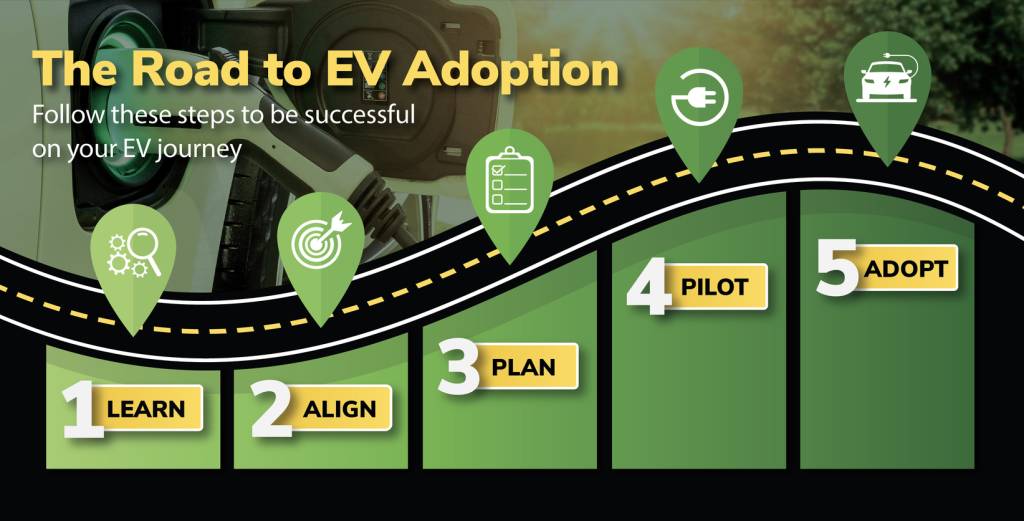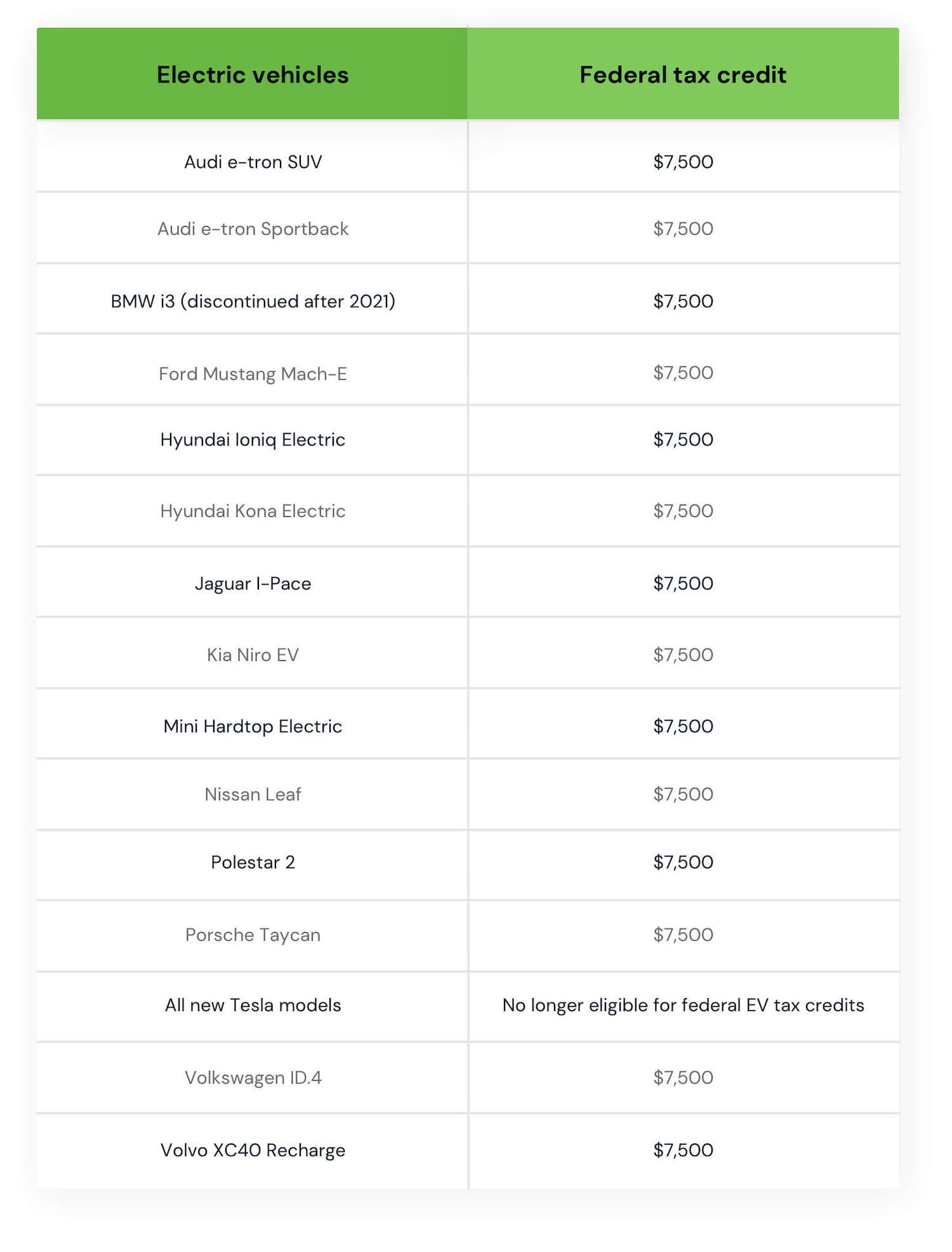Fleet Electrification: Is it Right for Your Fleet?
Society is emphasizing the importance of going green, and electric vehicles (EVs) have been and continue to be in the spotlight. Charging stations are becoming more available and government incentives are increasingly encouraging the personal and business use of EVs. Every fleet should begin their EV journey now, regardless of size or industry.
Car manufacturers are quickly racing to electrify their vehicles to meet the market demand. General Motors predicts that they will spend $27 billion on electric and autonomous vehicles through 2025, including the release of 20 new EV models in North America. These models will include pickup trucks, crossovers, and SUVs. For many fleets, if they haven’t started the electrification process, it’s now a question of “when” and not “if”.

Identifying Your Fleet Needs
Fleet electrification is a hefty but exciting task. We’ve broken it down into 5 easy steps.
- Learn
Educate yourself and your organization about the ever-growing EV landscape. Gather resources about vehicle makes and models, technologies, and the ecosystem of industry leaders that offer support services like charging and infrastructure. - Align
Ensure your organization has clear direction around how EV implementation aligns with your Environmental Social & Governance (ESG) goals, including stakeholder buy-in and executive level alignment. Make sure to identify, involve, and engage internal parties and EV evangelists throughout the company. - Plan
Assess where EV adoption fits into your fleet and determine your starting point. Outline the steps to transition, including possible infrastructure enhancements, which mandates need to be met in implementation, driver training, and your ordering strategy. Define your budget, including any grants or incentives you will use to offset costs. - Pilot
Implement EVs in a select portion of your fleet to learn, assess feasibility, and understand how to scale across your operations. Predetermine a pilot timeframe and direct your teams to focus on data gathering and field feedback so you can understand how your EV strategy may impact drivers, customers, and your overall business operations. - Adopt
Work toward full EV adoption and integration. This includes optimizing EV performance, tracking your progress toward sustainability goal achievements, and reviewing your collected data. Remember to revisit your progress and update your EV vision regularly. EV adoption is a journey rather than a set destination, so continue to evolve and grow your efforts over time.
Benefits of Electrifying Your Fleet
- Environmental Benefits – Electric vehicles (EVs) are more energy efficient than internal combustion engine (ICE) vehicles. In fact, an EV can be over 85% efficient, while an ICE vehicle is around 25-30% efficient.
- Social Responsibility – Employees and customers alike will appreciate your contribution to reducing tailpipe emissions and pollution.
- Cost Savings – Electric vehicles require less maintenance than traditional vehicles, which saves companies a lot of planned and unplanned repair costs and downtime. There are many government incentives for electric vehicles, like the Qualified Plug-In Electric Vehicle Tax Credit, which credits eligible electric vehicles up to $7,500 of federal income tax credits.
There are many different types of electric vehicles. Electric vehicle (EV) is the umbrella term for vehicles that rely (at least partially) on battery power.
Types of Fleet Electrification Vehicles
All-Electric Vehicles or Battery Electric Vehicles (AEVs or BEVs) run entirely on an electric motor. They use regenerative braking to charge the battery and can also be plugged to charge.
Hybrid Electric Vehicles (HEVs) are powered with an internal combustion engine and electric motor that uses batteries to run. A traditional hybrid cannot charge electrically but is recharged through regenerative braking or refueled with gas.
Plug-In Hybrid Electric Vehicles (PHEV) have both an internal combustion engine and electric motor. They can charge their battery through braking, like a HEV, but have a larger battery and can be plugged in to be charged. They can also be refueled like an internal combustion engine vehicle.
EV Charging Options
Here is a brief overview of the three EV charging options. There are public charging stations found throughout the US. Private charging depot stations can be found in workplace garages, parking lots and in private homes.
Level 1
Level 1 charging is an option for personal use, where you simply plug your vehicle into a home wall outlet. However, on average, it will take about 24 hours to fully charge an EV with a level 1 charger.
Level 2
Level 2 stations are the most common charging stations, and each level 2 connector is capable of charging more than one vehicle per day. With a level 2 charging depot, EVs can fully charge in 4-8 hours. Some Level 2 stations have multiple connectors that allow vehicles to charge simultaneously.
Level 3
Level 3, or DC fast charging ports, are available in some public depots. DC fast charging may be used as part of a fleet strategy to alleviate charging congestion or to allow employees to charge vehicles up to 80% in 20 minutes of charging.
How to Get Started
A great way to get started is to contact a fleet management company, like Merchants Fleet. They will work with you to audit your current fleet operations and make recommendations for the best way to start implementing EVs. You may choose to implement a pilot program, a trial period for fleet managers to discover how to best incorporate EVs into the fleet.
Why Merchants for Your Fleet Electrification
At Merchants Fleet, we have 60 years of knowledge and experience with EVs and ICE vehicles. We have an extensive, growing inventory of EV fleet options, and provide a variety of support programs, including fleet telematics, maintenance, consulting, leasing, and more. We aim to enable every business to be able to adapt to an electric fleet, including yours.
Contact an electric vehicle fleet expert to see how we can help at every step of the EV electrification journey.







